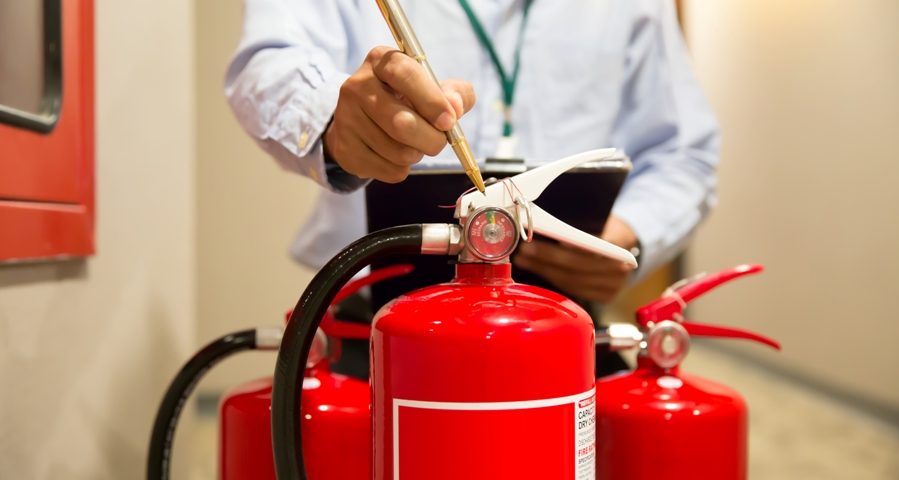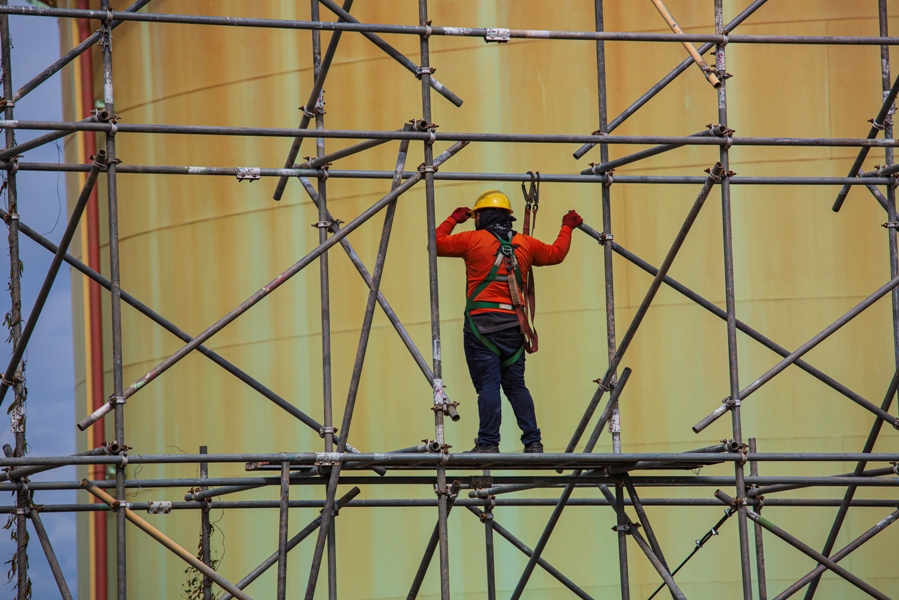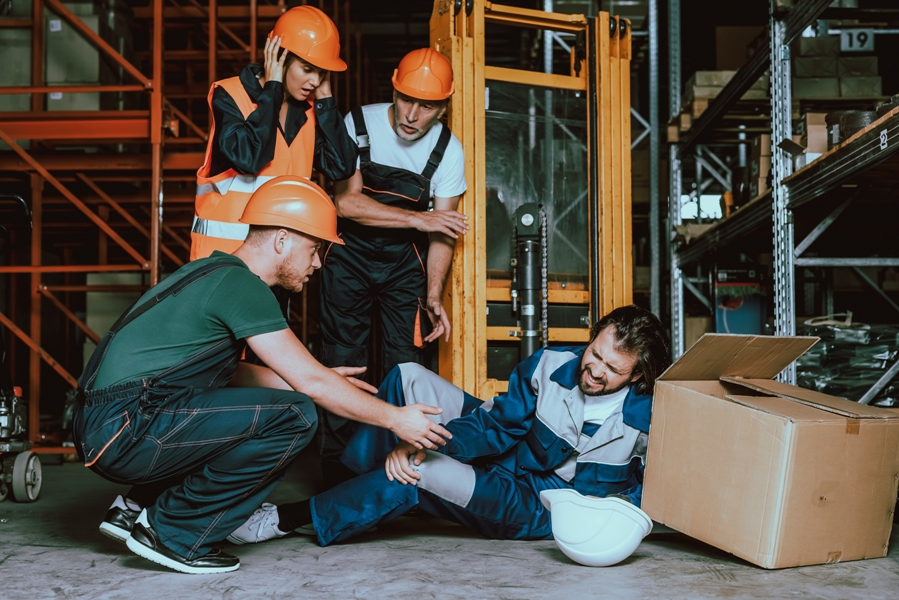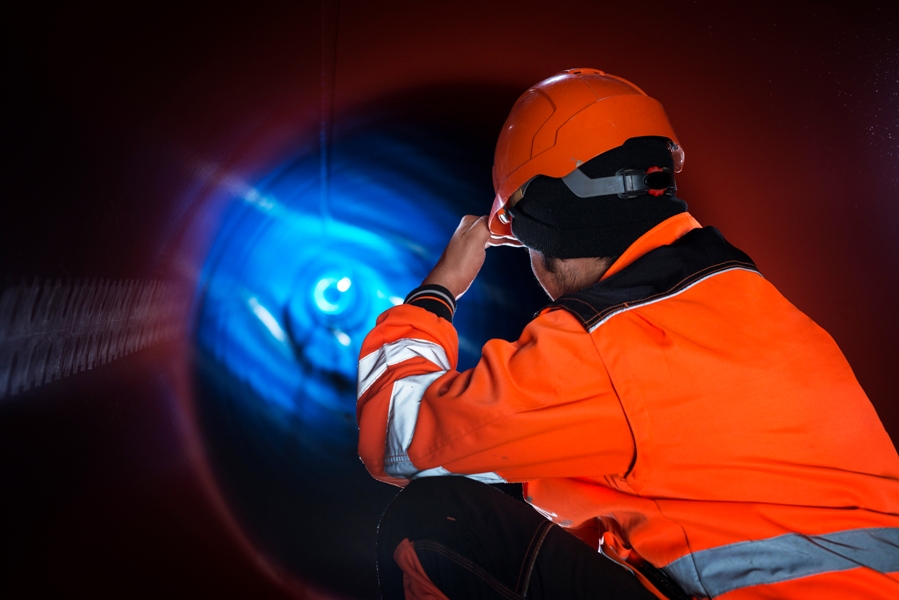
5 Challenges of Confined Space Rescues
December 18, 2023
Emergency in the Workplace – Are You Prepared?
February 2, 2024Tips for Organizing a Fire Extinguisher Training Session at Work

Fire emergencies can occur anytime and anywhere, making it essential that workplaces are prepared. One key aspect of this preparation is ensuring that employees are trained in using fire extinguishers effectively. Organizing a fire extinguisher training session at work is not only a crucial safety measure, it is a compliance requirement under OSHA safety certification rules. We will guide you through the process of planning and conducting an effective portable fire extinguisher training session.
Understanding Fire Extinguishers
First, it’s important to understand the different types of fire extinguishers and their appropriate uses. Fire extinguishers are classified based on the type of fire they are designed to combat. For instance, Class A extinguishers are used for ordinary combustibles like wood and paper, while Class B is for flammable liquids. A thorough understanding of these classifications and their applications is crucial for effective training.
Planning the Training Session
Effective planning is the cornerstone of a successful fire extinguisher training session. Start by determining the specific needs of your workplace. How many employees need training? What types of fire risks are most prevalent in your work environment? Once you have a clear understanding of these aspects, you can plan the logistics of the training, such as the date, time, and location.
To further refine your planning, consider the unique layout and potential fire hazards of your workplace. It’s essential to tailor the training to address these specific risks. Additionally, factor in the varying schedules of employees to ensure maximum attendance. Choosing a convenient location that’s easily accessible for all participants is also crucial. Remember, the more detailed your planning, the more effective the training will be. Ensuring that logistical aspects are well thought out and communicated clearly will pave the way for a smooth and impactful training session.
Engaging the Right Trainer
The quality of the training largely depends on the trainer’s expertise. Look for a professional like Impact Safety, with extensive experience in portable fire extinguisher training and OSHA safety certification. A qualified trainer will not only provide valuable insights, but will also ensure that the training complies with OSHA standards.
In selecting a trainer, prioritize those with a strong track record in practical firefighting skills and a deep understanding of workplace safety protocols. Ideally, this individual should have hands-on experience in emergency response and be adept at engaging diverse audiences. Their ability to provide real-life examples and answer complex questions can significantly enhance the learning experience. Additionally, verify their credentials and ensure they are updated with the latest OSHA regulations and training methodologies. The right trainer transforms a standard session into an empowering learning opportunity for your team.
Preparing Employees for the Session
Preparation is key to ensuring that employees get the most out of the training session. Inform your staff about the importance of the training and encourage them to participate actively. Provide them with basic information on fire safety and extinguisher use before the session to build a foundation for what they will learn.
To optimize preparation, distribute pre-training materials such as safety guides or instructional videos. This will familiarize employees with fire safety concepts and extinguisher operations, fostering a more productive training environment. Additionally, consider a pre-training survey to gauge employees’ current knowledge and tailor the session accordingly. Encouraging questions and active participation during the training will further engage employees, making the session more interactive and effective. Remember, an informed and prepared team is more likely to retain and apply their training effectively in real-life situations.
Conducting the Training Session
The training session should be interactive and hands-on. A typical session includes theoretical instruction on fire safety, practical demonstrations of using fire extinguishers, and hands-on practice for employees. Ensure that the training covers how to identify the right type of extinguisher for a fire, safety precautions, and the correct technique for using an extinguisher.
Incorporate scenario-based exercises to simulate real fire situations, enhancing practical understanding. These exercises should challenge employees to think quickly and apply their knowledge under pressure. Also, consider using a variety of extinguishers to provide experience with different models and sizes. This hands-on approach not only boosts confidence but also ingrains crucial skills, ensuring employees are well-prepared to respond effectively in an emergency. Remember, the more interactive and realistic the training, the better equipped your team will be in handling fire emergencies.
Follow-Up After the Training
After the training session, it’s important to evaluate its effectiveness. Gather feedback from participants and assess if they feel more confident in handling fire emergencies. It’s also a good practice to conduct regular drills to reinforce what was learned.
Follow-up evaluations should include both immediate feedback and long-term assessments to measure knowledge retention and practical application. Utilize surveys or informal discussions for immediate reactions, and schedule follow-up drills or quizzes to test understanding over time. This ongoing assessment helps identify areas for improvement and ensures continuous learning. Reinforcing the training with periodic refreshers or advanced sessions can further solidify the skills and knowledge necessary for effective fire emergency response.
Conclusion
Organizing a fire extinguisher training session is a crucial step in enhancing workplace safety. By understanding fire extinguishers, engaging the right trainer, preparing employees, conducting an effective session, and following up, you can ensure that your team is equipped to handle fire emergencies. Remember, knowledge and preparedness are key to preventing and effectively responding to fires in the workplace.
Portable Fire Extinguisher Training With Impact Safety
Impact Safety offers crucial hands-on fire extinguisher training to empower employees to respond effectively during fire emergencies. Our comprehensive training educates employees on the use of fire extinguishers, fire hazards, safe evacuation routes, and more, ensuring familiarity with all aspects of fire-fighting. The half-day course includes practical experience with portable fire extinguishers, teaching the PASS method and when not to use an extinguisher, suitable for all workers with certification upon completion. Founded in 2001, Impact Safety specializes in a range of safety services, including OSHA training and consulting. With over 35 years of experience, our team is skilled in transforming workplaces into safer environments, offering tailored safety plans to enhance operational efficiency, reduce risks, and boost business profitability. Impact Safety stands ready to assist organizations in reaching their safety goals with various services, including safety specialists and mock audits. Contact us to learn more.



